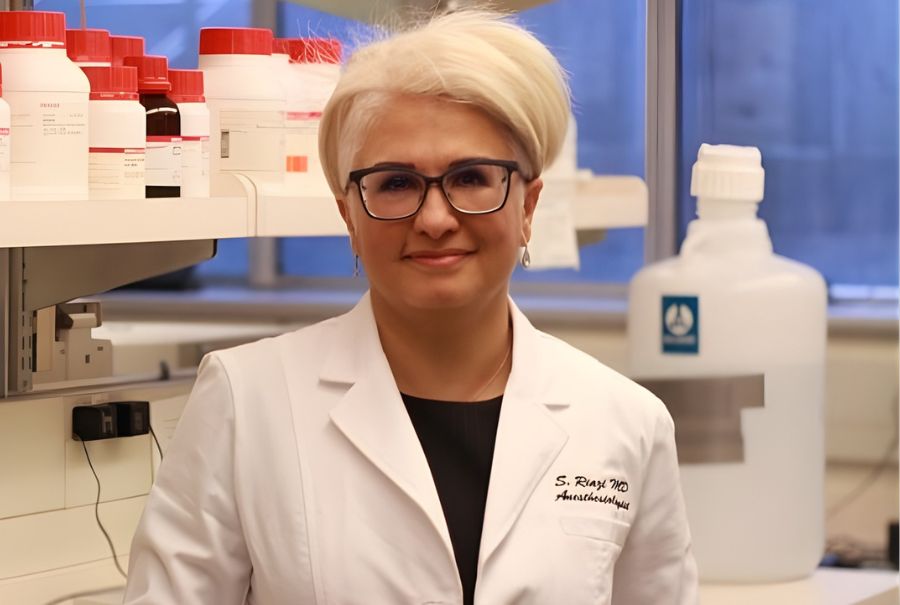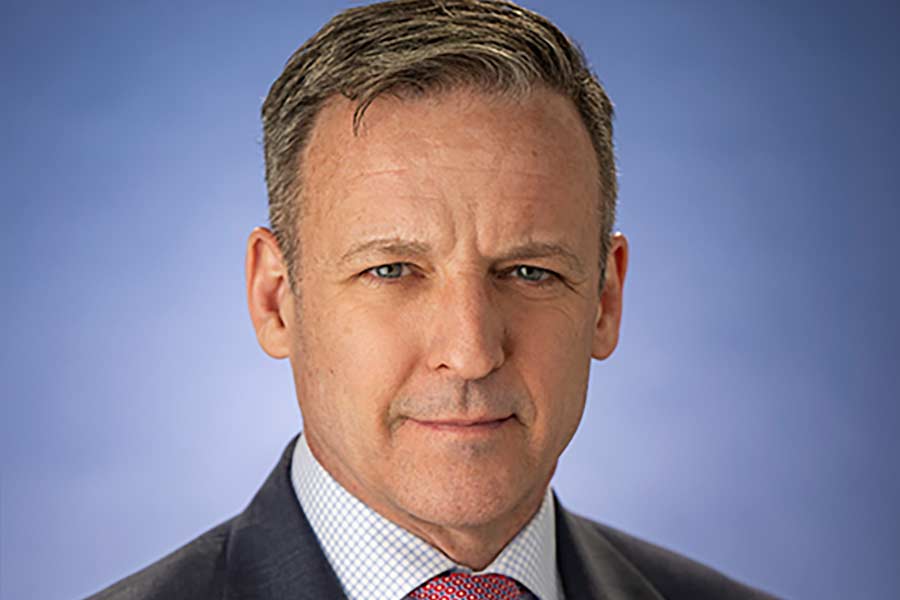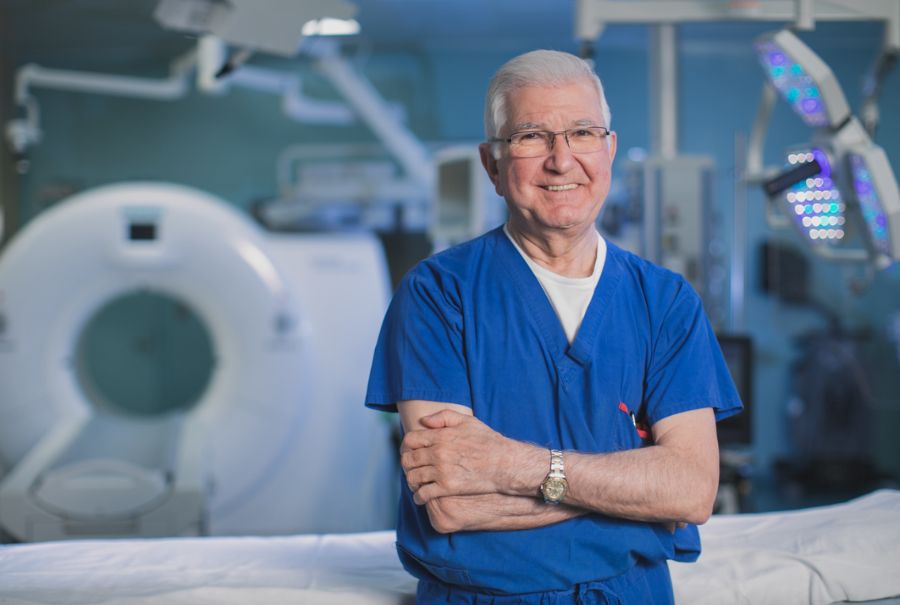Being a medical radiation technologist is all about being a team player. Just one year after graduating, Chrsytal Lucero is a full-time nuclear medicine technologist at University Health Network (UHN). She’s pictured here supporting a patient receiving a CT scan at Toronto General Hospital. (Photo: UHN)
Chrystal Lucero starts her mornings by picking up a cooler of radioactive drugs from Toronto General Hospital’s radiopharmacy. The radioactive materials are stored in heavy lead shielded containers to protect her from radiological hazards.
Under her gloves, she puts on a special ring called a dosimeter to monitor her radiation exposure levels and protect her from absorbing too much radiation.
She heads up to Nuclear Medicine to unpack and prepare the radiopharmaceuticals before her first patients arrive for their scans.
She’s preparing for her day as a nuclear medicine technologist (MRT) – one of many specialities celebrated November 6 to 12 during Medical Radiation Technologists Week.
MRTs include imaging technologists, sonographers and radiation therapists are essential to many health care services. MRTs can work in general X-Ray, computed tomography (CT), medical resonance imaging (MRI), breast imaging, nuclear medicine, interventional radiology, diagnostic medical sonography, and radiation therapy.
In 2021, nearly one million imaging exams were performed across the Joint Department of Medical Imaging (JDMI), which includes UHN, Sinai Health and Women’s College Hospital, by 250 MRTs, and 180 radiation therapists provided 11,300 courses or radiation therapy to cancer patients.
In 2022, Chrystal graduated from the Joint Medical Radiation Sciences Nuclear Medicine & Molecular Imaging Program offered by the University of Toronto and the Michener Institute of Education at UHN – one of many programs that can lead to a fulfilling career as an MRT.
‘It can be tough, but it’s rewarding knowing I’m helping them’
“It was a very hands-on experience and I loved the idea of coming to class and there only being 17 of us,” she says. “We learned how to use the equipment by treating each other like patients and mimicking real-life scenarios – I do really think that separates Michener from other schools.”
In her third year at Michener/U of T, Chrystal completed her clinical placement at JDMI. She worked with patients requiring positron emission tomography (PET) scans at Princess Margaret Cancer Centre. PET scans use radioactive tracer to help diagnose cancer and to find out where and whether the cancer has spread.
“I fell in love with being an MRT and interacting with patients,” says Chrystal “At Princess Margaret, you see a wide variety of cancer patients.
“It can be tough, but it’s rewarding knowing I’m helping them as much as I can – I always take time to hear their stories and give them the care they deserve.”
Only one month after graduating, Chrystal became a full-time nuclear medicine technologist at UHN.
As part of her role, Chrystal administers the radioactive tracers – the ones she collected at the start of her day – to patients via injections, gas, and sometimes mixed into food. Why? The radioactive material enables visualization of organ and tissue structure as well as function in scans. This helps care teams diagnose and treat conditions such as cancer, heart disease, thyroid disease, bone disease.
In addition to administering radioactive substances, Chrystal is responsible for ensuring the safety of patients and visitors, tracking bodily functions, reviewing patient records, operating sophisticated equipment and ensuring quality images are taken so that radiologists can make accurate diagnoses and treatment plans for patients.
“We (MRTs) truly do a lot for our patients,” she says.
MRTs have an immense impact on patient care. Proper medical imaging is crucial to diagnosing diseases and tracking the progress of ongoing illnesses. Without proper diagnosis, there is no treatment plan or cure.
“I absolutely adore the people that I work with, that’s what really keeps me at UHN,” Chrystal says. “As chaotic as it can be with all of the workload, we have each other’s backs and really help each other out – it’s a lot of fun.”


